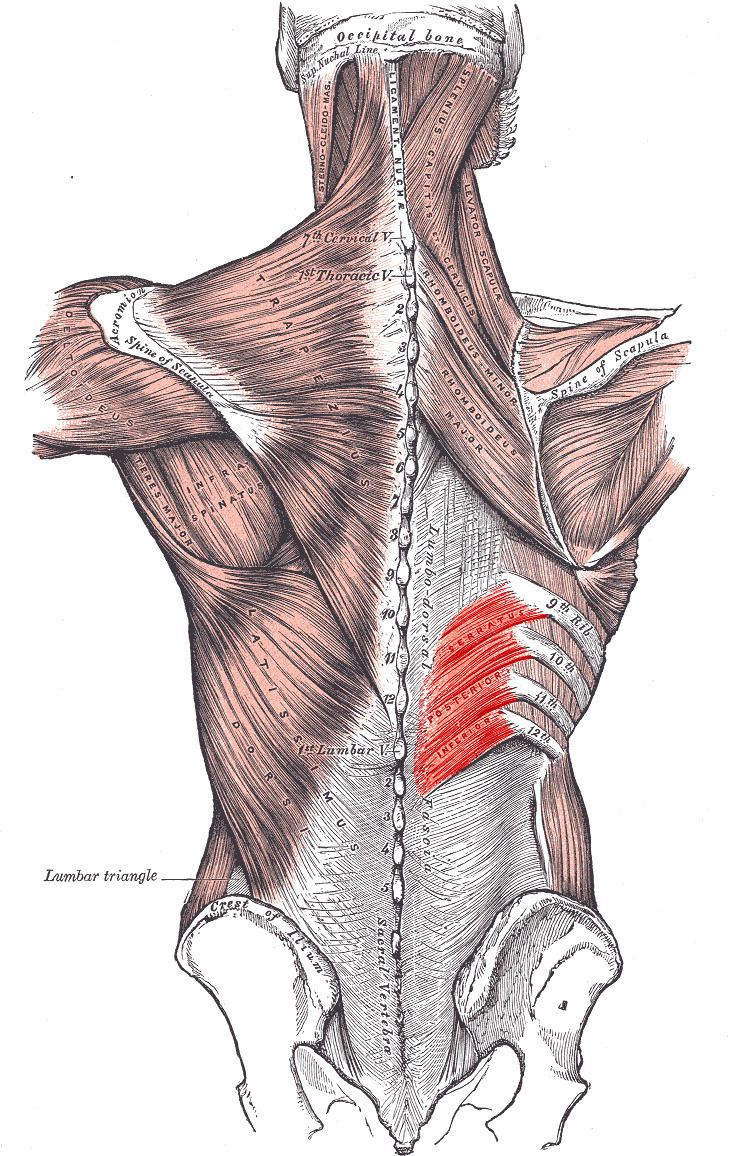 | ||
Origin Vertebrae: Spinous processes of T11 - L2 Actions Depress the lower ribs, aiding in expiration Latin Musculus serratus posterior inferior | ||
The Serratus posterior inferior muscle (or posterior serratus) is a muscle of the human body.
Contents
Origin and insertion
The muscle lies at the junction of the thoracic and lumbar regions. The origin arises from the vertebrae T11 through L2. The muscle's insertion is the lower border of the 9th through 12th ribs.
It is situated at the junction of the thoracic and lumbar regions: it is of an irregularly quadrilateral form, broader than the serratus posterior superior muscle, and separated from it by a wide interval.
It arises by a thin aponeurosis from the spinous processes of the lower two thoracic and upper two or three lumbar vertebrae, and from the supraspinal ligament.
Passing obliquely upward and lateralward, it becomes fleshy, and divides into four flat digitations, which are inserted into the inferior borders of the lower four ribs, a little beyond their angles.
The thin aponeurosis of origin is intimately blended with the lumbodorsal fascia, and aponeurosis of the Latissimus dorsi.
Function
The serratus posterior inferior draws the lower ribs backward and downward to assist in rotation and extension of the trunk. This movement of the ribs also contributes to forced expiration of air from the lungs.
